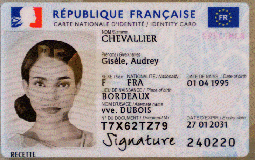Volume 10, Issue 2 (2023) Proceedings from the 2023 Annual Meeting of the Document Academy
It was quite moving to welcome the 20th edition of Docam to Paris, an event whose history was recounted when Niels Windfeld Lund, one of its founders, welcomed participants. All the more moving given that the 2023 edition takes place at the CNAM (Conservatoire National des Arts et Métiers), where Suzanne Briet founded INTD, the Institut National des Techniques Documentaires, which was also attended by Robert Pagès, whose research is currently being rediscovered by Michael Buckland and Olivier Le Deuff.
The theme of Docam'23 was "Document Design and Co-Design". According to document theory, all content recorded or transcribed to facilitate memory and coordination is documentary in nature. In the digital world, new forms of documentality open up new possibilities for writing: collaborative writing on networks, AI-assisted writing, platforms enabling the production and management of heritage archives, and so on.
The aim of this edition of DOCAM was to open up to all forms of reflection linked to the place of design and collaborative design of documentary environments in fields as varied as science, art, socio-digital networks, digital heritage, engineering, services and industry... The activities studied can range from the early stages of creation to the final stages of engineering, via the documentation of the design process.
In addition to a number of stimulating presentations, the inaugural lectures by Johanna Drucker, followed by Michael Buckland and Olivier Le Deuff, presented two currently rather unrelated facets of document research. Johanna Drucker addressed the question of graphic rhetoric, the performative dimension of the materiality of supports, the way in which the visual arts and architecture, graphic design, UI design, animation and data visualization contribute to structuring content and constitute a new rhetoric where text blends with drawing, photo and video. While the interweaving of text and image is nothing new, digital technologies now open up almost infinite possibilities for combination, the conceptual implications of which in terms of the production of meaning are a blind spot in literature and communication training.
At the same time, research into documentary media, such as that by Michael Buckland, who is currently studying the work of Robert Pagès, is analyzing the different languages used to index documents, distinguishing, for example, between attributes corresponding to the immediate material properties of the medium (pagination, author's printed name, weight, etc.) and attributes corresponding to immaterial properties (genre, language, theme, etc.). These properties can be applied to the document as an individual (instance, occurrence, object) or as a specimen (type, class).
Graphic rhetoric uses a variety of techniques to express these differences.The structure of a table may correspond to the properties of a specimen, the content of its boxes to the individual, the associated object [Shown as the profile image for the Issue: "Graphic rhetoric illustrating the person as a specimen (nationality, place of birth, etc.) and as an individual (photo, signature), distinguishing property from value through typography. https://www.gouvernement.fr/actualite/tout-ce-qu-il-faut-savoir-sur-la-nouvelle-carte-nationale-d-identite".] Photos correspond to individuals, logos to specimens, etc. Expliciting attributes in the text or image or, on the contrary, leaving them implicit by inviting the reader to discover them in the course of the narrative (fragmented or smooth text), corresponds to important design choices in different document genres (fiction, documentary, legal, etc.).
It seems to us that document theory and knowledge organization, which study different ways of classifying and indexing documents and their content, are not sufficiently aware of the way in which they rely on graphic rhetoric and its patterns. Conversely, graphic rhetoric is not always aware of the fact that a large proportion of the mental operations it elicits are based on classification and indexing principles that allow us to graphically represent the difference between specimens (type, class) and particulars (instance, object) and their reciprocal relationships.
Manuel Zacklad
2023 DOCAM Chair
Articles
Document Productivity Cycle (Study case of Samudera Raksa Ship Museum)
Ciwuk Musiana Yudhawasthi and Lydia Christiani
Conference Proceedings
Ecological Functions of the Document in Art and Design: Diplomatic Documents in Artistic Inquiries
Yann Aucompte
Exploring Artifacts and Documents in Collective Creativity Workshops Applied to Future Studies
Mathilde Sarré-Charrier
Document Theory and Document Design
Arthur Perret
Revisiting Robert Pagès: Documents and Culture
Michael K. Buckland
What Is a Lesbian Document? Platforming Archival Description, Documents, and History in Sweden
Rachel Pierce
Documentation As Meta-Level Activity
Sascha Donner

Issue Editors
- Editor
- Carrie Boettcher
- Editor
- Laurie Bonnici
- Editor
- Tim Gorichanaz
- Editor
- Jodi Kearns
- Editor
- Kiersten F. Latham
- Guest Editor; 2023 DOCAM Chair
- Manuel Zacklad
Conference Information
- Theme: Document Design and Co-Design
- September 7-8, 2023
- Paris, France
DOCAM'23 Program
Dicen-IdF laboratory,
Conservatoire National des Arts et Métiers
This issue also includes two special articles on the History of Documentation and Information Science in the Asia-Pacific Region.